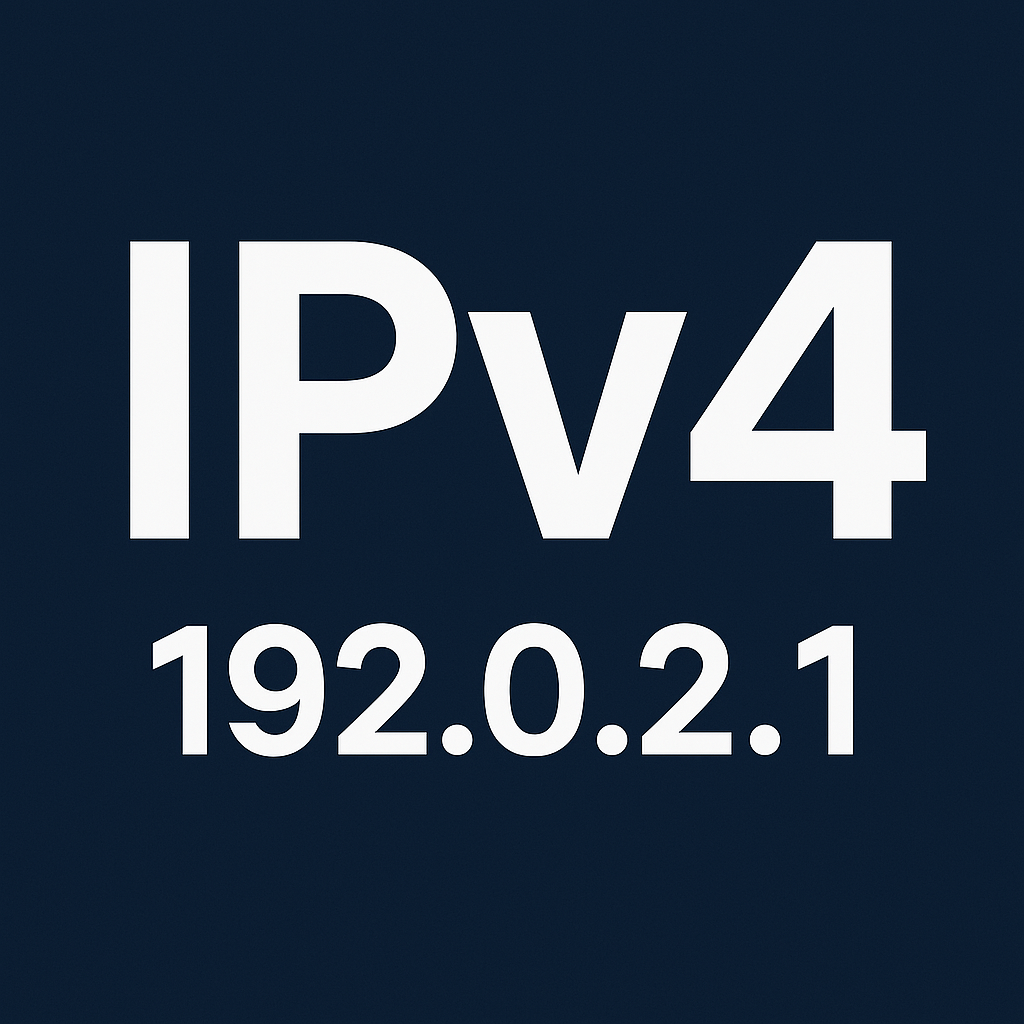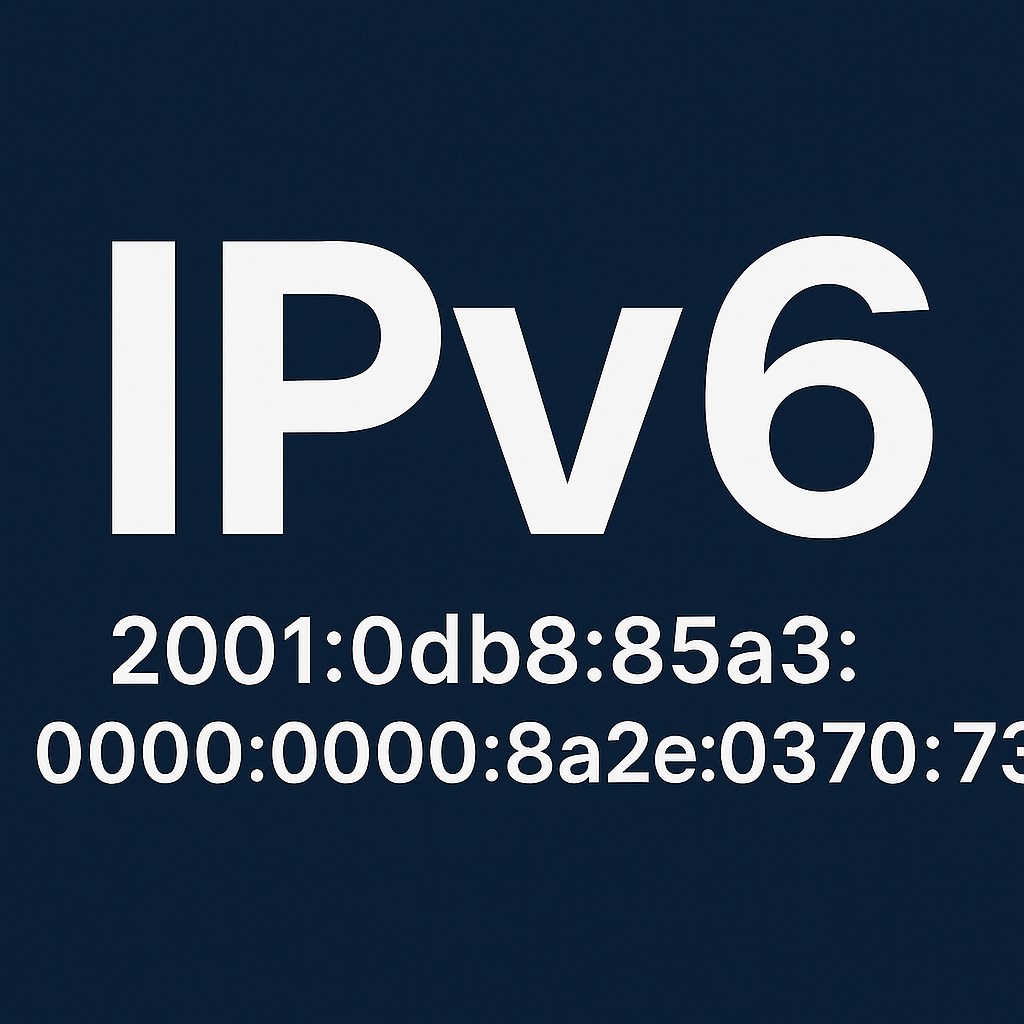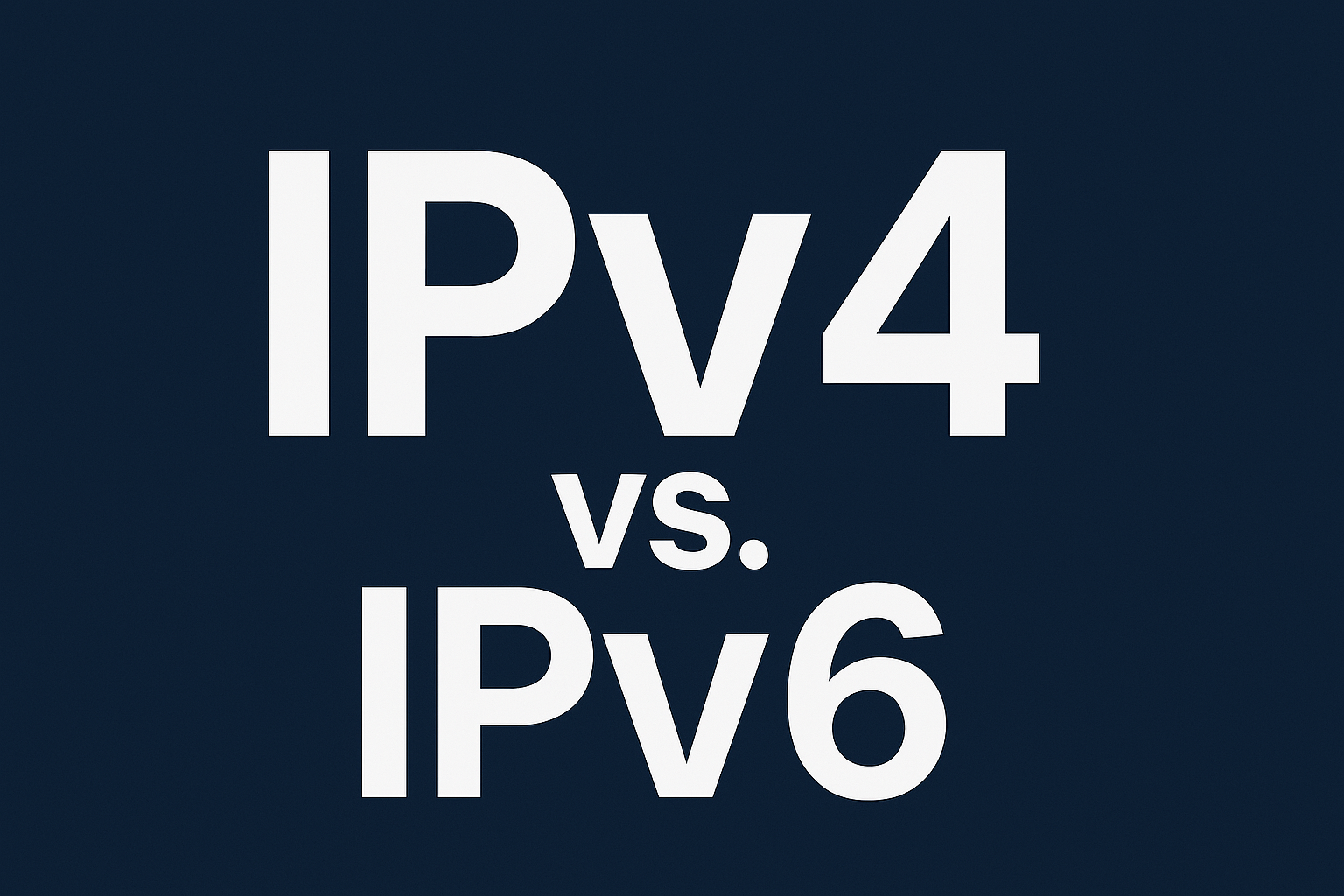As the internet continues to grow, the need for more IP addresses has become increasingly important. That’s where IPv6 comes into play. But what exactly is the difference between IPv4 and IPv6, and why does it matter to you? In this blog, we’ll explore both protocols, their key differences, and why the world is slowly shifting toward IPv6.
What is IPv4?

IPv4 (Internet Protocol version 4) is the fourth version of the Internet Protocol and is widely used to identify devices on a network using an addressing system. An IPv4 address is a 32-bit number typically written in dotted decimal format (e.g., 192.168.0.1), allowing for approximately 4.3 billion unique addresses.
Key Features of IPv4:
-
32-bit address space
-
Around 4.3 billion addresses
-
Written as four decimal numbers separated by dots
-
Supported by almost all internet-connected devices
-
Uses Network Address Translation (NAT) due to address exhaustion
What is IPv6?

IPv6 (Internet Protocol version 6) is the most recent version of the Internet Protocol, developed to address the limitations of IPv4, particularly the shortage of available IP addresses. IPv6 uses 128-bit addresses, which means it can support roughly 340 undecillion unique addresses.
Key Features of IPv6:
128-bit address space
Virtually unlimited number of addresses
Written in hexadecimal, separated by colons (e.g., 2001:0db8:85a3:0000:0000:8a2e:0370:7334)
Simplifies packet processing
Eliminates the need for NAT
IPv4 vs IPv6: Head-to-Head Comparison
| Feature | IPv4 | IPv6 |
|---|---|---|
| Address Length | 32-bit | 128-bit |
| Address Format | Decimal, dotted notation | Hexadecimal, colon-separated |
| Number of Addresses | ~4.3 billion | ~340 undecillion |
| Header Complexity | More complex | Simplified |
| NAT Support | Required | Not required |
| Security | Optional (via IPSec) | Built-in with IPSec |
| Deployment | Widely deployed | Still in transition |
For a deeper technical comparison, check out Cloudflare’s explanation on IPv6.
Why IPv4 is Running Out (And Why IPv6 is the Future)
1. The IPv4 Address Exhaustion Problem
IPv4 was designed in the 1980s when the internet was tiny. With only 4.3 billion possible addresses, we’ve hit a wall. Workarounds like NAT (Network Address Translation) help, but they add complexity and slow things down.
Fun Fact: The last IPv4 blocks were allocated in 2011. Now, companies buy/sell old IPv4 addresses at premium prices!
2. IPv6 Solves the Address Shortage
IPv6 uses 128-bit addresses, providing 340 undecillion unique addresses—enough for every grain of sand on Earth to have its own IP!
✅ No more NAT → Simpler, faster networks.
✅ Supports IoT growth → Billions of smart devices need addresses.
Advantages of IPv6 Over IPv4
1. Better Performance
No NAT → Less latency, faster connections.
Simplified headers → More efficient routing.
2. Built-In Security
IPSec (encryption & authentication) is mandatory in IPv6.
IPv4 relies on extra security layers (like VPNs).
3. Auto-Configuration (Plug & Play)
IPv6 devices can self-configure (SLAAC) without DHCP.
IPv4 often needs manual setup.
4. Future-Proofing
Supports multicast (efficient data streaming).
Better for mobile networks (seamless handoffs).
Challenges of IPv6 Adoption
Despite its benefits, IPv6 adoption has been slow because:
🚧 Legacy Systems – Many old devices/networks still rely on IPv4.
🚧 Cost & Complexity – Upgrading infrastructure takes time and money.
🚧 Compatibility Issues – IPv6 and IPv4 don’t directly communicate (needs dual-stack or tunneling).
Conclusion: Which One Should You Use?
Stick with IPv4 for now if your devices/networks don’t support IPv6.
Upgrade to IPv6 if you want better speed, security, and future readiness.
The transition is inevitable—so it’s good to understand both!
Further Reading
Got questions? Drop them in the comments! 🚀

